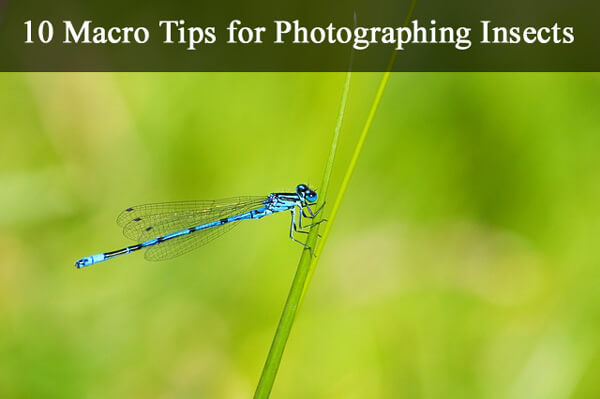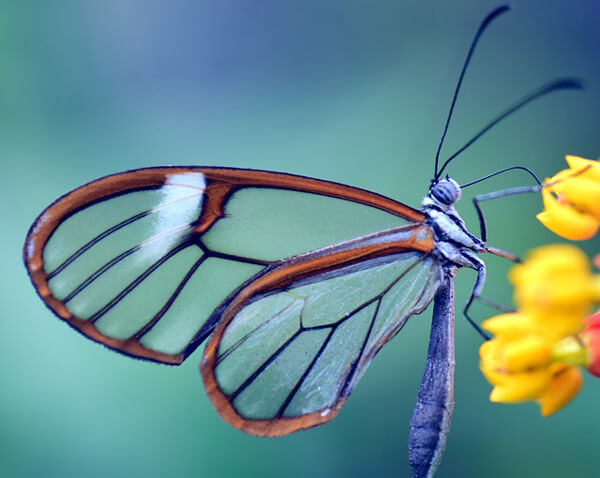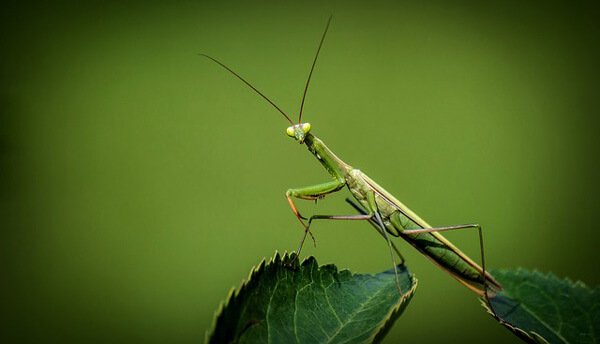Photographing insects is a matter of good timing, patience and suitable equipment. Dismiss any one of these key factors and your photos won’t be satisfactory. If you’re fascinated by butterflies, spiders, dragonflies and any other bug in its minuscule environment, these macro tips will give you some techniques and approaches to achieve the perfect shot.
 Image courtesy of Pixabay.com
Image courtesy of Pixabay.com
What makes insect photography so alluring is that it reveals unbelievable details we can’t see with a naked eye.
However, there’s no denying that a lot of hard work goes into macro photography, and only truly passionate photographers are willing to go to the lengths of waiting for hours and enduring non-ideal weather conditions without the certainty of getting that great shot. Without any further ado, here are the 10 most important tips you should keep in mind next time you’re taking photos of insects.
1. Work with what You Have
It’s a common misconception that you have to spend a fortune if you decide to pursue macro photography. While it’s true that more expensive equipment will yield sharper, higher quality photos, insects photography can also be achieved with a point and shoot. This is more difficult since you have to get very, very close to your object, but it’s not impossible.
If you have an SLR, you can get beautiful macro shots of insects just with a macro lens. To step up your game, you can invest in a close-up filter, extension tubes and bellows. An extension tube is a hollow cylinder that is placed between the camera body and your lens, increasing magnification. This piece of equipment is very valuable for macro photography because it doesn’t affect the quality of the image, allowing the photographer to get beautiful, crisp details of insects.
2. Use a Third Hand
Taking photographs is often tricky since you have to strike the perfect balance between various aspects. Taking macro photos of insects is even trickier since you are dealing with a subject that keeps moving or that can be easily spooked. While patience and perseverance are a must, there is another thing you can use to your advantage: a third hand.
With a pretty self-explanatory name, this device is used in general macro photography to position subjects, but will also come in handy for insects close ups. You can attract butterflies and bees with a flower or place spiders, ants and other bugs on a twig. This device enables you to fully control the position and the background of your shot.
If you don’t want to invest in a third hand, you can choose the budget friendly DIY option: tie the stem of the plant to a cane that is wedged next to the plant in the ground.
3. Try out Different Angles, Check the Background and Use Live View
You have to be quick on your feet when you’re shooting insects, or else your subject will fly or run away. However, there are a few things you should never rush when you’re taking photos of insects.
Take the time to try out different angles. If you’re really aiming for the best picture possible, think outside the box and snap away from the most unconventional angles. A macro photo of a butterfly with its wings wide open looks great when taken from above, but what if you face the butterfly and show its eyes and antennas instead?
At the same time, when you are composing the photo in your mind, think about the background – does it create a harmonious canvas for your subject or does it clash with it in an unpleasant way? You might only have a few seconds at your disposal to snap the picture, so make sure your background is at its best to save precious hours in post-op.
There’s nothing more frustrating when finally taking the much expected shot of an insect than discovering your subject wasn’t in focus, that your photos are blurry or that there was a smudge on your lens. To avoid these errors and many others, take a second or two to use Live View.
 Image courtesy of Pixabay.com
Image courtesy of Pixabay.com
4. Start Out Early in the Day
There are two main reasons why you’ll want to set your alarm as early in the morning as possible: no wind and good lighting. When you’re taking close-ups of insects out in the field, wind is among your biggest enemies. Since you’re using a slow shutter speed, your photos are prone to looking blurry even if there is a slight breeze. For beautiful shots of fragile flowers, spider webs and dew droplets, take advantage of the calm winds in the morning that won’t disturb your subjects.
5. Chooses the Right Aperture
Macro photography often requires small apertures like f/16 or f/22 for most lenses and f/32 for macro lenses. These make the most out of the available depth of field, creating a sharp image. However, if you want to choose the other extreme and compose a soft shot, you can open up to full apertures like f/2.8 or f/4. Your subject will be in focus while the background will transform into bokeh, reflected points of light that can give the image an interesting look.
 Image courtesy of Pixabay.com
Image courtesy of Pixabay.com
6. Shoot in Manual Focus
The first thing you should do before snapping photos of insects is to switch from autofocus to manual. The AF system is useless when shooting in macro because it can’t set the exact plane of focus. Since a precise focus is key, you’ll have to switch to Live View to make it easier for you. To accurately position the focus point in Live View, magnify the area that should be in focus and turn the lens’ focus ring.
7. Invest in a Sturdy Tripod
Even if you think you have the steadiest hands, it’s important to have a good tripod to rely on. Camera shake is easier to notice when you are taking close-ups. Not only shaky hands can lead to blurry images. Even touching the shutter button of a camera mounted on a tripod can create camera shake. To avoid this, use either a remote release or your camera’s self-timer. In addition, make sure you are using the fastest shutter speeds in order to keep movements to a minimum.
8. Light Your Subject Appropriately
Natural light is ideal for any photography, including macro photos of insects. However, conditions are not always perfect, so you often have to make do with what you have. If you’re shooting in a forest or on a cloudy day, avoid using your built in flash that will create a direct, harsh lighting. Instead, use a ring flash that provides an even spread of light. When using either natural or artificial light make sure your shadow doesn’t appear in the frame and be careful with overexposed areas on your subject. To bounce light into darker areas of your frame, use a reflector or make a DIY version from cardboard and silver foil.
9. Make Your Own Backgrounds
If you’re not completely satisfied with the natural backgrounds you usually shoot against, you can easily create your own. The sky’s the limit so you can choose any color, pattern or print you want, or even stick to black and white. Your custom made backgrounds will enable you to help the subject stand out and will provide an even, soft canvas.
10. Play around with Distances
Macro photography doesn’t necessarily imply getting as close as possible to your subject. When you’re photographing insects, this might not even be possible without scaring away your subject. You should always experiment with distance until you find the perfect frame that interests you. Zooming out will allow a bit of background to creep into your image, creating context and scale.









The depth of an images that normally we can’t seen. Capturing that image with a extreme close up distance. I really like this type of photography. Thanks for sharing this nice article on Macro photography.